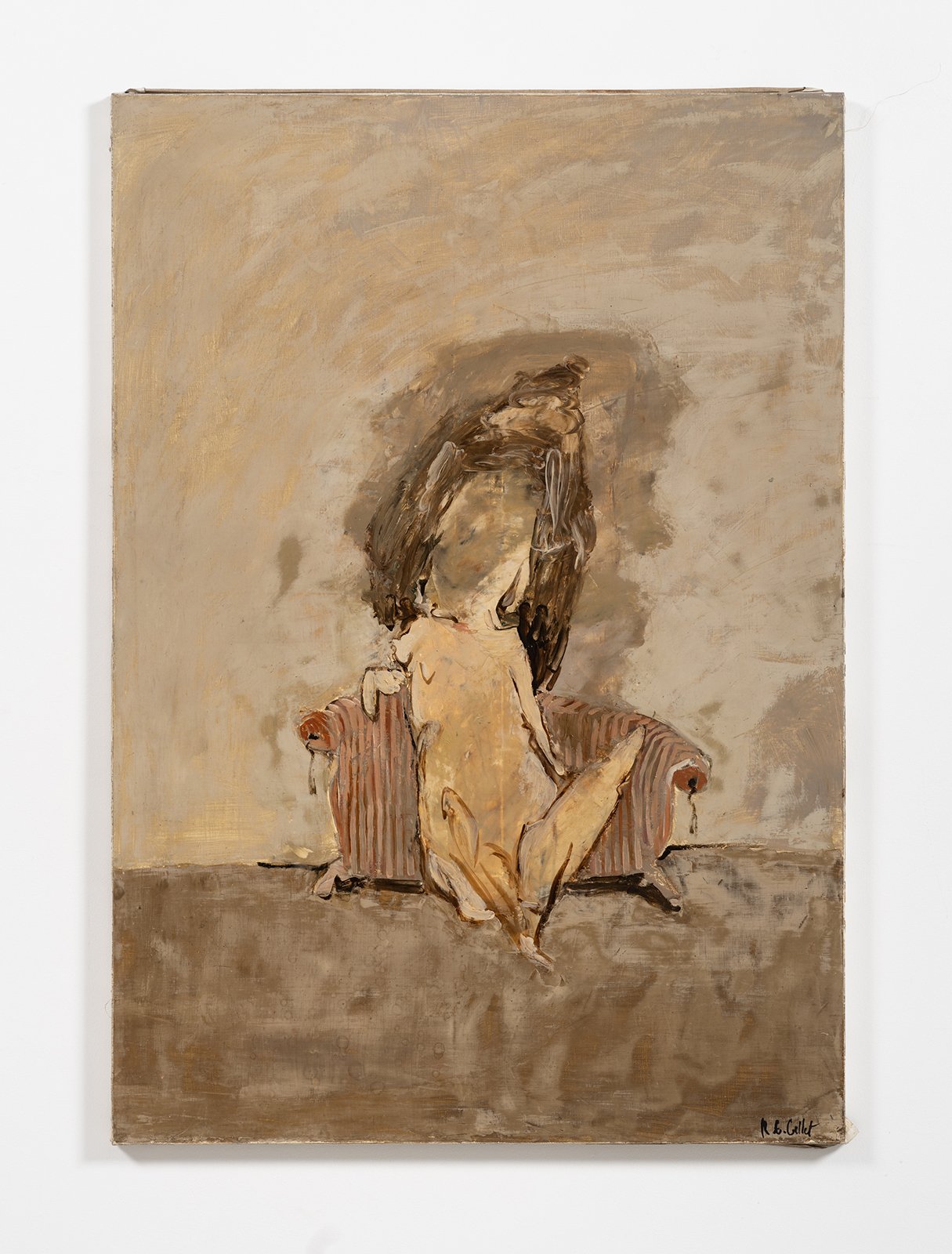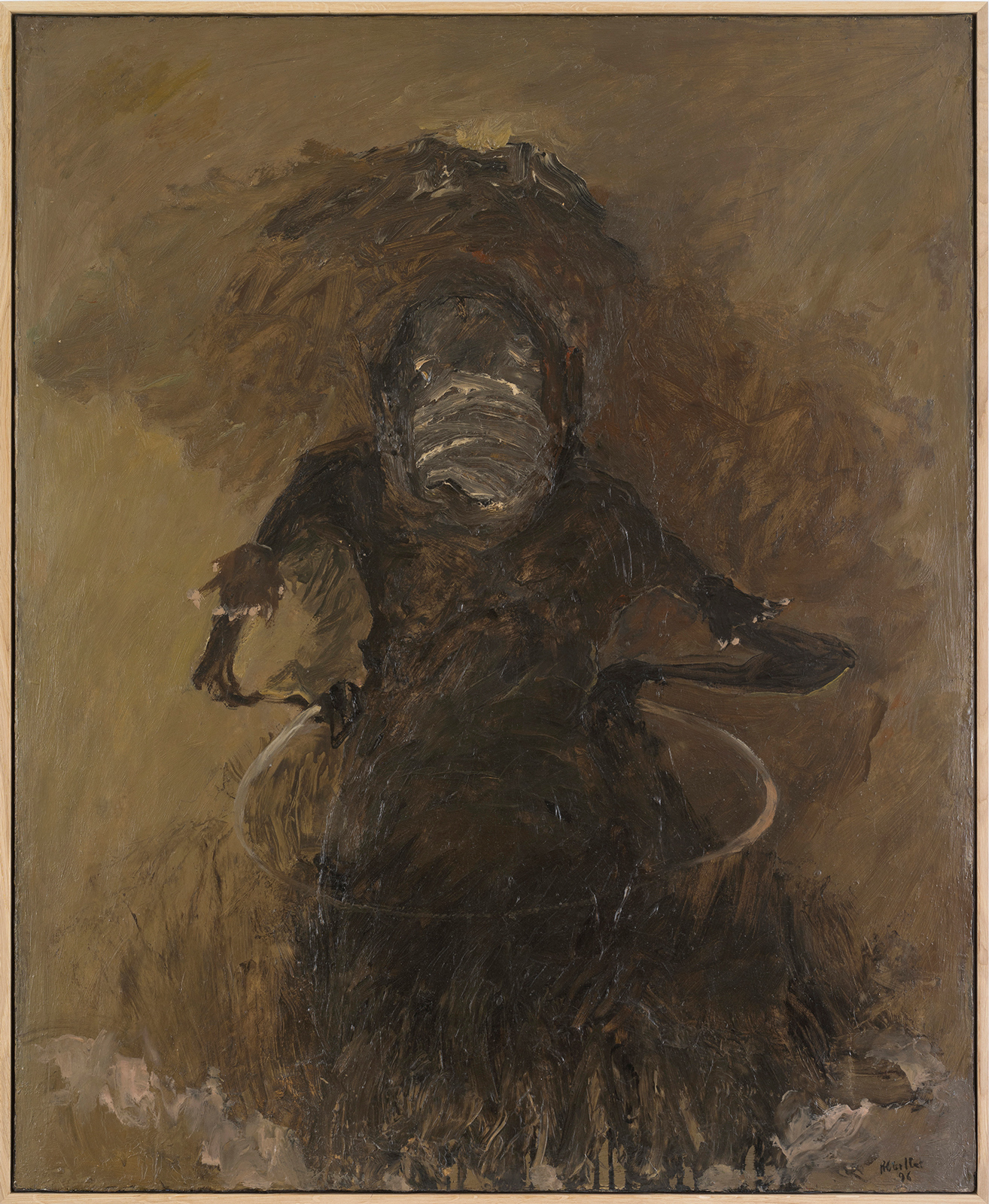Is tragedy timeless? The contemporaneity of Roger-Edgar Gillet
The self-exile of Roger-Edgar Gillet from Art Informel to pursue figuration soaked in tragedy has stood the test of time
Among the artists from the past century whose work has been reframed today, a few bring back a sense of tragedy that sounds familiar to the contemporary historian, critic, and viewer. Their work is like a trip back home, even if the house is broken and desperate. Their steps backwards are more important than those forward, following a linear path – albeit inverted – that is no longer found today where diachrony (the development over time of solutions, styles, themes, movements) has been supplanted by a frantic partiality. Across geographies and decades from the past, it is heartening to find lines that break: André Derain returning to the earth colors; the anger of Philip Guston in abandoning abstraction; the trembling of Jean Hélion in starting to paint pumpkins. With Roger-Edgar Gillet we delve into one of these stories, coming to understand that his loyalty to tragedy is what reverberates with emerging artists today.

Paris, immediately after World War II: in Saint-Germain-des-Prés, galleries host the germinal exhibitions of the Art Informel. At the funeral of Antonin Artaud in 1948, a young Gillet – at the time an engraver, teacher, actor, set designer and painter influenced by Bonnard – shows up. Four years later, aged 28, he is included along his peers Georges Mathieu and Jean-Paul Riopelle in Un art autre, the bible of Art Informel by critic Michel Tapié. In 1953, Gillet has his first solo at John Craven’s gallery, an exhibition with such resonance that the artist is later invited to show in Belgium together with a few Cobra members. He subsequently connects with Tapié’s rival critic, Charles Estienne, who helps expand the artist’s audience, granting him prestigious awards. By the end of the 1950s, Gillet is an austere abstractionist with a predilection for earth colors. Right at the start, he seems to fight the artistic battles of his time with the help of numerous companions, but suddenly something breaks and the painter takes the path of figuration alone.
Listing the historical and contemporary influences on Gillet’s figurative works from the end of the 1950s till his death would need a separate essay. The artist has seen everything and hints at everything: Rembrandt, Goya, Ensor, infinite portraits of a late 19th-century girl in the tub, Jean Fautrier, Alberto Burri… To understand what Gillet himself is looking for in painting, however, it is useful to go back to his trip to the US in 1955. At the MET in New York, the young Gillet discovers the Portrait of Fernando Niño de Guevara by El Greco and feels he is being looked into. This feeling of the “gaze that penetrates the body”, to quote Gillet, is perhaps a common sensation for art lovers but rare and peculiar for artists whose work tends to split the eyes from the heart.
Revelatory moments can’t be overlooked. The El Greco picture of the inquisitor – paradoxically a good-natured subject with his gaze, yet Mephistophelean in the detail of his little finger curved in a spasm – is Gillet’s transformative experience. The painting is crumpled: areas of the character’s robe look like sheets of paper, floating but graphically hard; unlike the hands, the facial complexion is artificial as if that of a dead body with makeup on; the glasses clot up the somatic characteristics, creating an annoying punctum in this ghostly and disharmonious masterpiece. In short, the figure is already the one that Gillet will analyze in countless works: a centripetal head, sewn to a vertical body, placed at the center of the composition.

From the 1960s until his death, Gillet will dedicate a part of his production to portraits of grotesque creatures, devastated and at the same time capable of generating sympathy and affection in the viewer. Skinned, crushed, torn characters; think of Jeune fille assise, 1966, so archetypically similar to Giorgione’s old woman or Goya’s old men; or Sur canape, 1968, where a semi-erased body like that of a frog rendered with a moldy spatula stroke still manages, by virtue of the plastic pose, to be bold and amused as a Bertolucci actress. Over the decades, Gillet remains very faithful to his figurative dogma, so much so that a 1996 painting, La Dame au houla hoop, shows little formal differences from much earlier works—the painter consistently understands Goya’s taste for the human temperature of aberration.
As Raphael Rubinstein recalls, in 1945 at the age of 19, Gillet was called up to serve in the French army but was diagnosed with Polio shortly after. Post-polio syndrome, which can manifest itself even after 40 years from the infection, involves progressive muscle weakness and severe fatigue. The specters of war and disease resonate in Gillet’s characters, who scream, wrinkle, pile up and degrade into the brown and ocher pigments in which they are rendered, without ever deciding to exist, without ever taking shape. In the first of the lectures given in 1946, the psychiatrist and Holocaust survivor Viktor E. Frankl says: “[In the camp] everything was reduced to a bare existence, made incandescent by pain. All the inessential was melted, reducing the human being to what, in the final analysis, he was: either anyone in the mass, that is, nobody real, the anonymous, the nameless element of his prison number; or himself. Was anything like a decision possible? No wonder, as “existence” – to whose nakedness and defenselessness man had been brought back – is nothing but this: decision.” [1]

In order to exist, one needs to decide to do so, individually, even when society tries to annihilate you. Deciding not to exist might amount to taking one’s own life, but our time has slipped away from the feverish tragedy of life and death to take a third road, more smeared, gray and longer, that of not deciding to exist—this is what we term depression now. Part of Gillet’s charm that today appeals to a younger audience can be traced back to the fact that the artist arrived at the new millennium bringing with him the tragedy of his youth, without indulging in any post-modern smoothing or volatilization of pain. Gillet’s grotesque, crumpled portraiture gathers a sense of tumid anonymity, of fat and overabundant chaos that seems to have known neither well-being nor relief, let alone the seduction of the colors of fashion, communication, Pop Art; in short: impervious to the new world.

On an art-historical level, the grotesque tragedy inherent in Gillet, as indeed that of his colleague Eugène Leroy, is a jumble of possibilities, a well of latency where among offal and scraps of rust some hopes of modernism live, or perhaps die, gasping while they dissolve. Despite being an exponent of a much more oblique pictorial culture than the very French Gillet, the Anglo-German painter Frank Auerbach grants a comparison: both artists tried to resolve the question of figuration by tormenting the faces of characters central to the composition, as if the unsolvable tension between the painting that conveys a gaze and the painting that conveys itself, between apostrophizing and having an answer, between expression and reflection, was to be resolved in those square centimeters of face in which El Greco had ironically painted irritating, very ungraceful, inquisitor’s glasses.
[1] Frankl V. E., 2022, Sul senso della vita, Mondadori, Milano, p.9.
January 9, 2023
